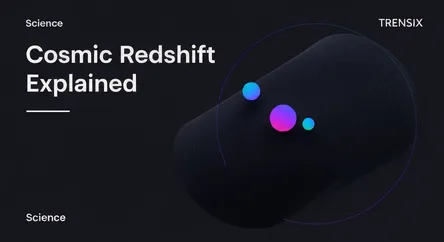Science
Cosmic Redshift Explained

Discover redshift, where light from distant galaxies stretches to redder wavelengths, providing key evidence for the universe's expansion.
What is it?
Redshift is a phenomenon in physics and astronomy where electromagnetic radiation (like light) from an object increases in wavelength. For visible light, this shifts it towards the red end of the spectrum. This is analogous to the Doppler effect for sound, where a siren's pitch lowers as it moves away. In a cosmic context, the light from distant galaxies is redshifted not just because they are moving away, but because the very fabric of space between us and them is expanding. This is known as cosmological redshift, and the farther away a galaxy is, the greater its redshift.
Why is it trending?
Redshift is fundamental to modern cosmology and is constantly in the news thanks to powerful new instruments like the James Webb Space Telescope (JWST). Astronomers use redshift to measure the distances to the most remote galaxies ever observed. Each new discovery of a high-redshift galaxy pushes the boundaries of our knowledge, offering a glimpse into the early universe just a few hundred million years after the Big Bang. These findings help scientists refine theories about galaxy formation, cosmic evolution, and the nature of dark energy.
How does it affect people?
While redshift doesn't directly impact daily life, it fundamentally shapes our understanding of the universe and our place within it. It's the cornerstone evidence for the Big Bang and the ongoing expansion of the cosmos. The quest to measure redshift has driven technological innovation, leading to more powerful telescopes, sensitive detectors, and advanced data analysis techniques. These advancements can spin off into other fields, such as medical imaging and satellite communications. Ultimately, understanding redshift fuels human curiosity and our collective quest to comprehend our cosmic origins.